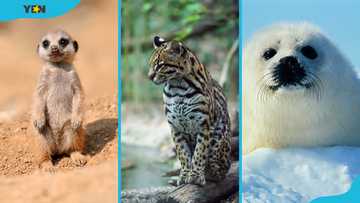What is the dumbest animal? 20 least intelligent animals in the world
Distinct animals have brains that are specialised for different purposes, which are influenced by more than just the amount of neurons. It has been discovered that animals with fewer nerve cells in the cortex of their brains might exhibit less sophisticated behaviours and cognitive capacities than those with more neurons. As a result, there are intelligent and dumb animals. What is the dumbest animal in the world?

Source: Getty Images
TABLE OF CONTENTS
To compile a list of the dumbest animals in the world, we considered factors such as the animal's reaction to its predators, feeding habits, and actions when in danger. We based our findings on data from various animal review websites such as Animal Spot, Animals Around the Globe, and A–Z Animals. However, this list is inconclusive because it may not include all the numbers considered dumb.
Dumbest animals in the world
Though the least intelligent creatures exhibit perplexing levels of idiocy, they also show a wide range of sophisticated behaviours that astound humans. So, what is the least intelligent animal on earth? Here is a list of the dumbest animals in the world.
| Animal | Classification |
| Sloth | Mammalia |
| Giant Panda | Mammalia |
| Flamingo | Aves |
| Ostrich | Aves |
| Turkey | Aves |
| Koala | Mammalia |
| Slow Loris | Mammalia |
| Kakapo | Aves |
| Giraffe | Mammalia |
| Cane Toad | Amphibia |
| Jerboa | Mammalia |
| Goblin Shark | Chondrichthyes |
| Horned Lizard | Reptilia |
| Lilac-breasted roller | Aves |
| Japanese land snail | Gastropoda |
| Killdeer | Aves |
| Secretary bird | Aves |
| Norwegian lemming | Mammalia |
| Komodo Dragon | Reptilia |
| Northern fulmar chick | Aves |
Sloth
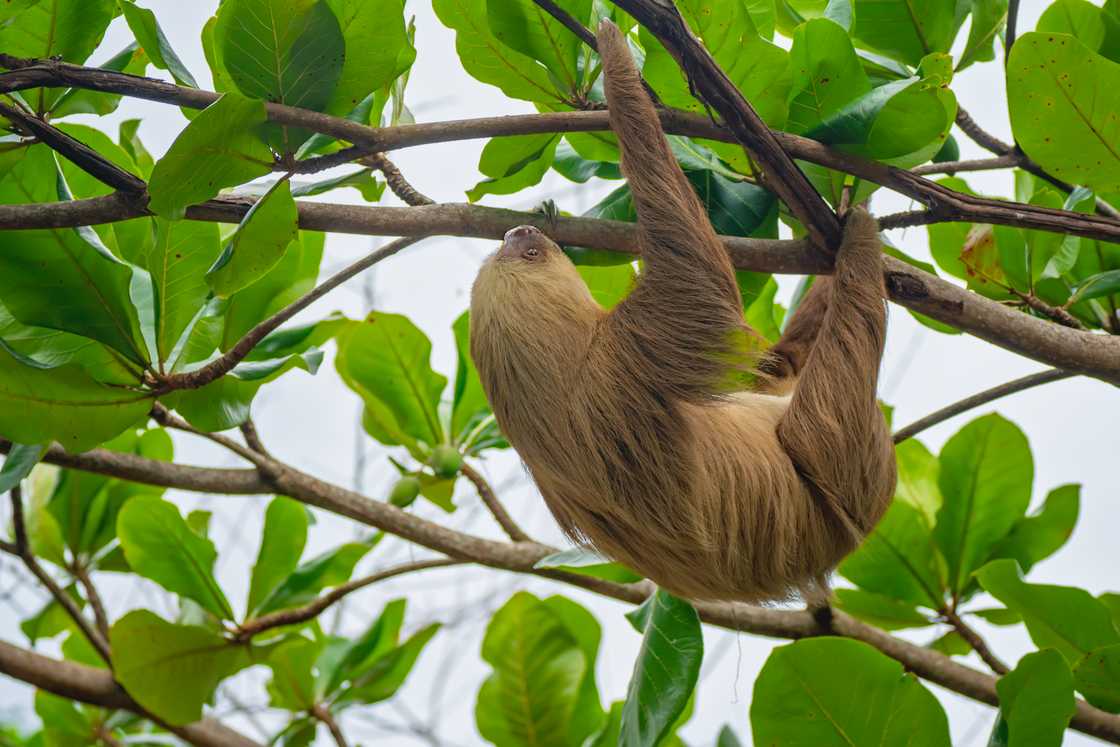
Source: Getty Images
- Mass: 3.6–7.7 kilograms (7.9–17 pounds)
- Trophic level: Herbivorous
- Life span: Over 20 years
- Class: Mammalia
What is the #1 dumbest animal? Sloths move incredibly slowly, even when threatened by predators. They devote most of their time to napping in neighbouring trees, yet rarely excrete there. They drop to the ground weekly to excrete, then climb back up. They frequently die as a result of confusing their limbs for tree branches.
Giant Panda
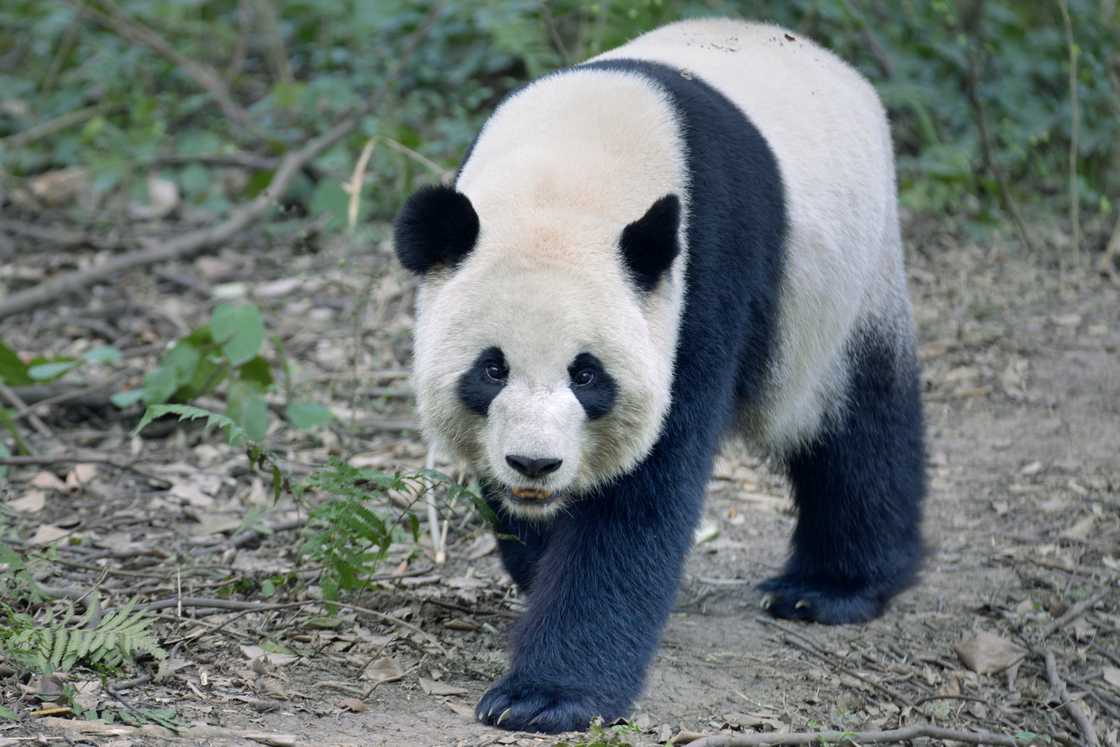
Source: Getty Images
- Mass: Female, adult 70–120 kilograms (154–264 pounds)
- Trophic level: Herbivorous
- Lifespan: 20 years (in the wild)
- Class: Mammalia

Read also
Makola women glow they slay in beautiful outfits and makeup while gracing the cover of Glitz Magazine
Are pandas dumb? They rank among the dumbest animals in the world. Although carnivorous, giant pandas prefer to consume plants rather than animals. They are also among the least romantic species on the planet.
They have a terrible record of rearing and nurturing their young ones, which could lead to their extinction. When females become dissatisfied with their offspring, they kill them!
Flamingo
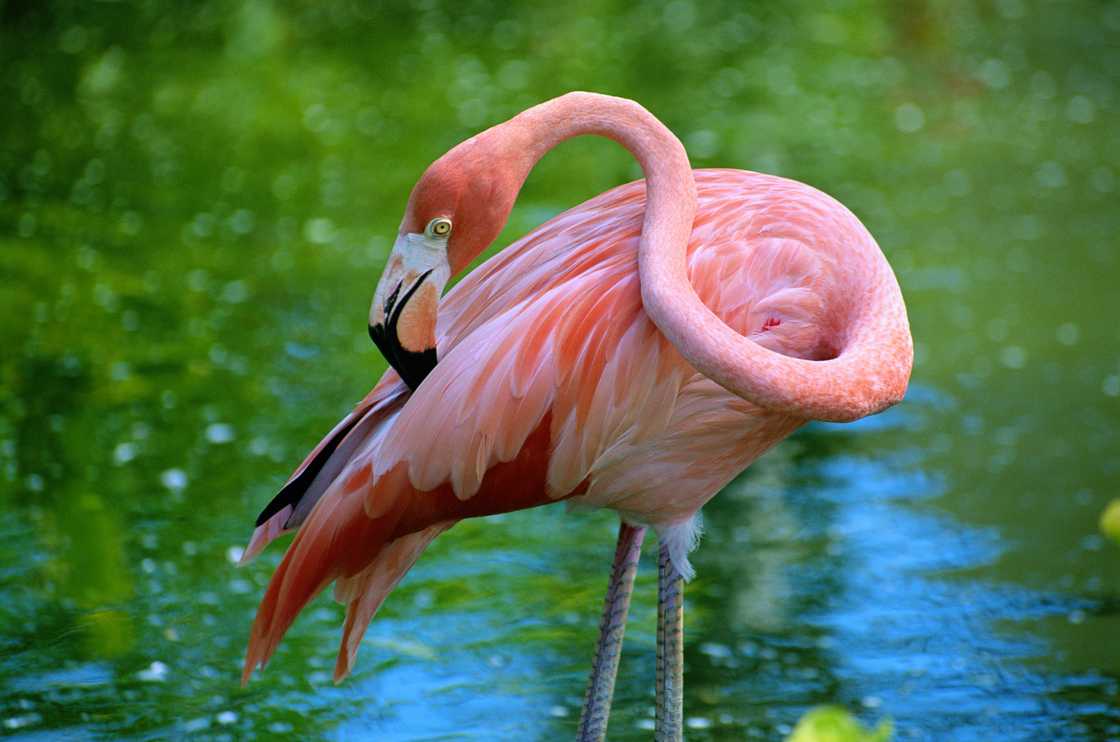
Source: Getty Images
- Mass: 1.8–3.6 kilograms (3.9–7.9 pounds)
- Trophic level: Carnivorous
- Life span: Over 60 years (in captivity) and 30–40 years (in the wild)
- Class: Aves
Are flamingos smart? Flamingos are not regarded as highly clever animals. They have two legs. However, they usually stand and rest on one. Flamingos also attempt to grab fish using their bills turned upside down in the water, making the job difficult.
Ostrich

Source: Getty Images
- Mass: 100–130 kilograms (220–290 pounds)
- Trophic level: Omnivorous
- Life Span: 30–40 years (in the world), up to 70 years (in captivity)
- Class: Aves
Ostriches are one of the stupidest animals in the world. They cannot fly and must run at high speeds to evade predators. If they cannot flee their opponent, they use their powerful legs to kick them.
If all else fails, they drop to the ground, neck and head extended ahead of them. The head and kneck colours fade into the earth, giving the impression that they are trapped. This makes the bird believe that it is undetectable to its predator.
Turkey

Source: Getty Images
- Mass: 13.5–39 kilograms (29–85 pounds)
- Trophic level: Carnivorous
- Life span: 3–5 years (in the world) 10 years (in captivity)
- Class: Aves
Turkeys rank among the least intelligent animals in the world. They constantly stare at the sky, even while it's raining, which can lead to their death. This behaviour can be ascribed to their fondness for drinking rainwater and the fact that some have a hereditary condition called tetanic torticollar spasms.
Koala
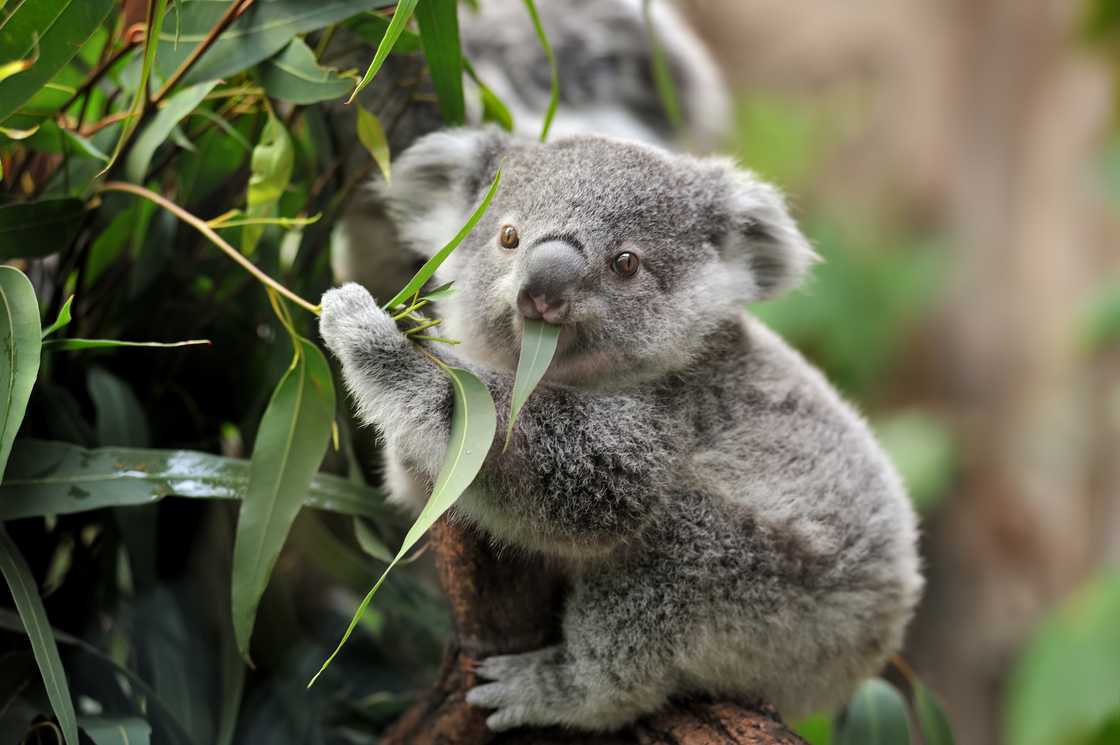
Source: Getty Images
- Mass: 4–15 kilograms (9–33 pounds)
- Trophic level: Herbivorous
- Lifespan: 13–18 years (in the wild)
- Class: Mammalia
The koala eats mostly on low-nutrient eucalyptus leaves, which are tough to break down even with four stomachs! Its lack of sanitation makes it a vector of infections, particularly Chlamydia. If they cannot find their favoured food, they may die of starvation.
Slow Loris
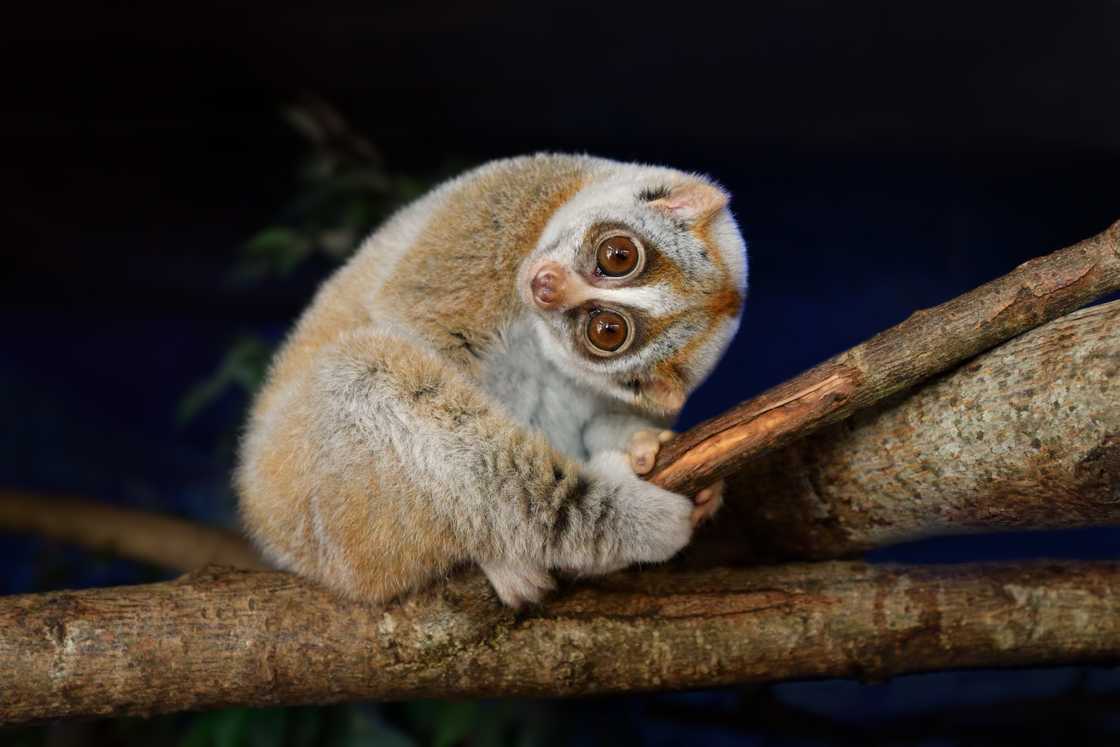
Source: Getty Images
- Mass: Male 68 grams (0.15 pounds)
- Trophic level: Omnivorous
- Lifespan: 20 years
- Class: Mammalia
The slow loris moves at an extremely sluggish pace. When it attempts to protect or hide from predators, its pace seldom disrupts the vegetation and ceases to move within seconds. Following that, the body remains entirely still.
When contacted, it freezes and conceals its face. It is dumb to approach a human without contemplating the risks. The slow loris seems unconcerned about adopting safety precautions because it has a deadly bite that could kill an individual without immediate intervention.
Kakapo

Source: Getty Images
- Mass: 2–4 kilograms (male, adult)
- Trophic level: Herbivorous
- Lifespan: 60 years
- Class: Aves
The kakapo pauses in terror when it sees its predator. It does not attempt to flee while waiting to be eaten. Furthermore, it could be a more efficient breeder. The male produces a strange mating call, leaving the female puzzled and stunned.
Giraffe
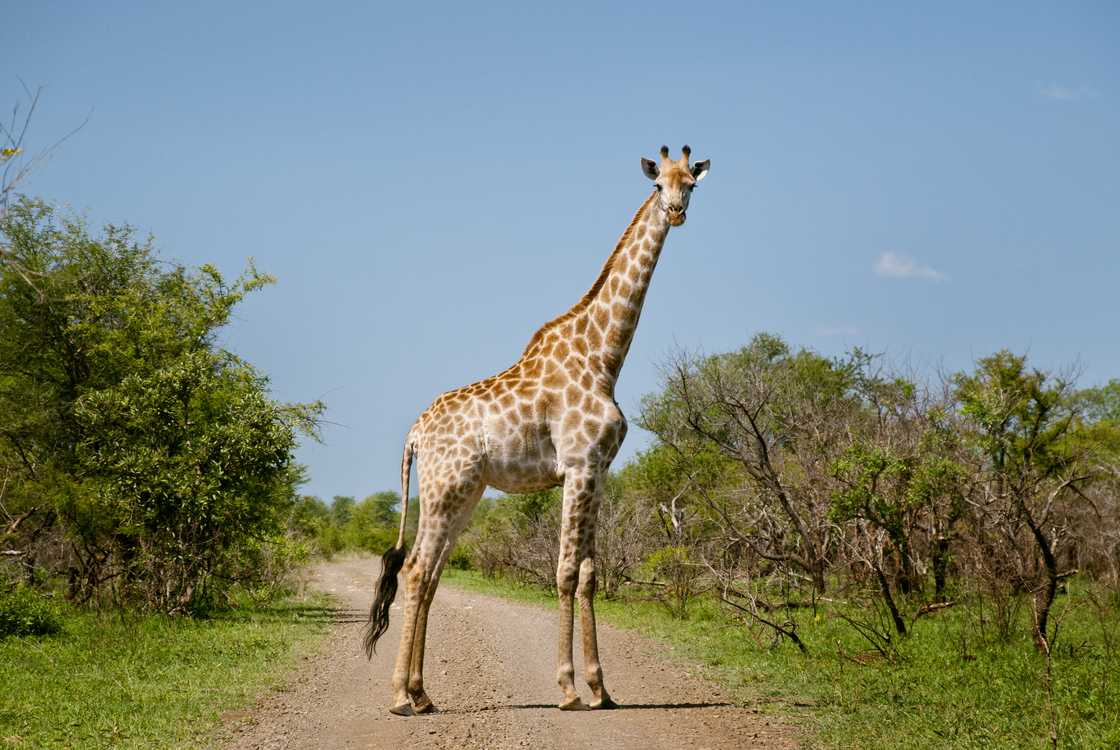
Source: Getty Images
- Mass: Male 1,200 kilograms (2645 pounds) Female 830 kilograms (1829 pounds)
- Trophic level: Herbivorous
- Lifespan: 25 years (in the wild)
- Class: Mammalia
Giraffes have long necks that allow them to consume the leaves of lofty trees. However, its original environment, East Africa, contains a restricted number of trees. It is very awkward that they consume little plants and grass with these long necks!
Cane Toad

Source: Getty Images
- Mass: Up to 1.5 kilograms (3.3 pounds)
- Trophic level: Carnivorous
- Lifespan: 10–15 years (in the wild)
- Class: Amphibia
This toad consumes both dead and living things. And its personality extends beyond its meals. The Cane toads can be seen freely engaged in physical affairs with nearly everything, living or dead. It bumps on snakes, lizards, rats, salamanders, and any other creature that moves without hesitation because it enjoys sexual connection.
Jerboa

Source: Getty Images
- Mass: 57 grams (0.12 pounds)
- Trophic level: Herbivorous
- Lifespan: Up to 6 years
- Class: Mammalia
Jerboas use bipedal movement to skip, leap, and dash away from predators, with irregular changes in speed and direction. Their unusual movements frequently scare off their predators. They are, however, not very good at evading from their adversaries. They also cannot correctly filter through rubbish in their quest for food.
Goblin shark
- Mass: 210 kilograms (462 pounds)
- Trophic level: Carnivorous
- Lifespan: Up to 60 years
- Class: Chondrichthyes
What is the dumbest sea animal? The goblin shark swims poorly, has poor vision, and is generally slow. It is so sluggish that it does not search for food. Its teeth are maintained in place by rings of stretchy skin tissue, so when a prey swims by, it merely traps it using the tissue without exerting any effort. It is an easy target for predators, allowing them to approach and take it away.
Horned lizard

Source: Getty Images
- Mass: 25 grams and below (0.05 pounds)
- Trophic level: Carnivorous
- Lifespan: 5 years
- Class: Reptilia
The horned lizard, with its short, dull nose and flattened body, is exceptionally sluggish. The dumb-looking animal pauses for its prey to approach before snatching the meal. It likes to spend the day relaxing in its natural surroundings.
Furthermore, its pleasant inclination towards humans causes it to disregard caution when seized for the pet trade or by those who seek to tame it without realising that it rarely survives outside its natural environment.
Lilac-breasted roller
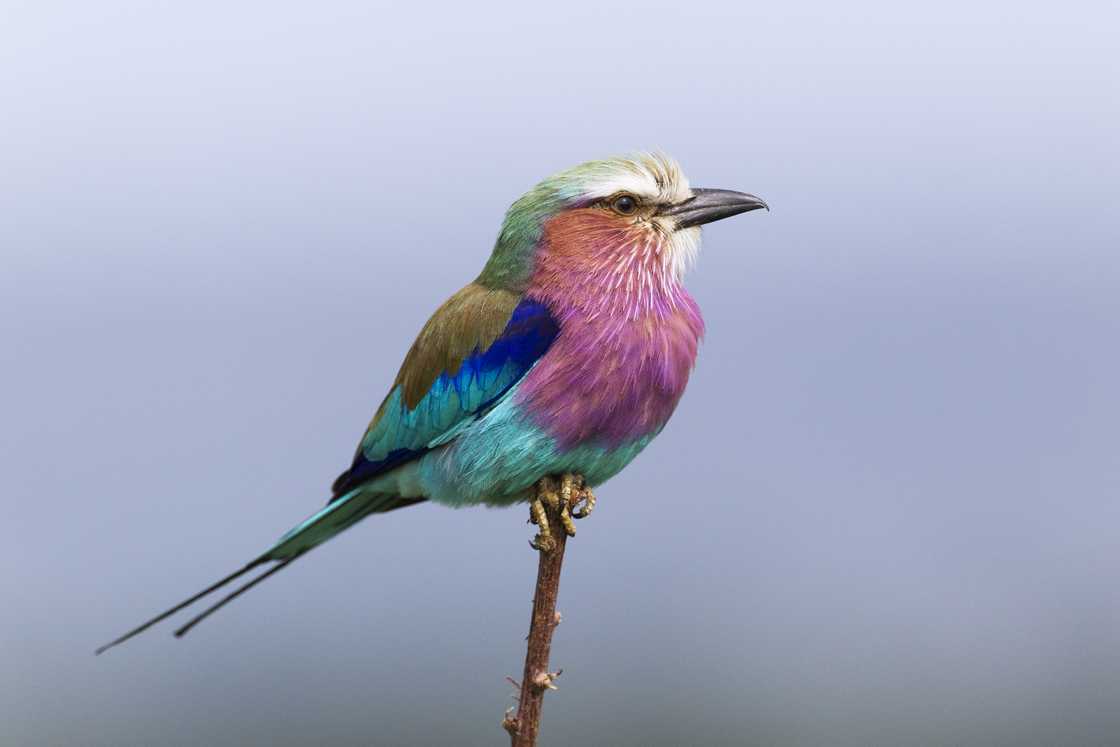
Source: Getty Images
- Mass: 110 grams (2.4 pounds)
- Trophic level: Carnivorous
- Lifespan: 10 years
- Class: Aves
The lilac-breasted roller ranks as one of the dumbest species on the planet because of its propensity for elevated perches, even when they are not breeding grounds. It does not try to run or hide when approached, making it conveniently available to poachers.
Japanese land snail
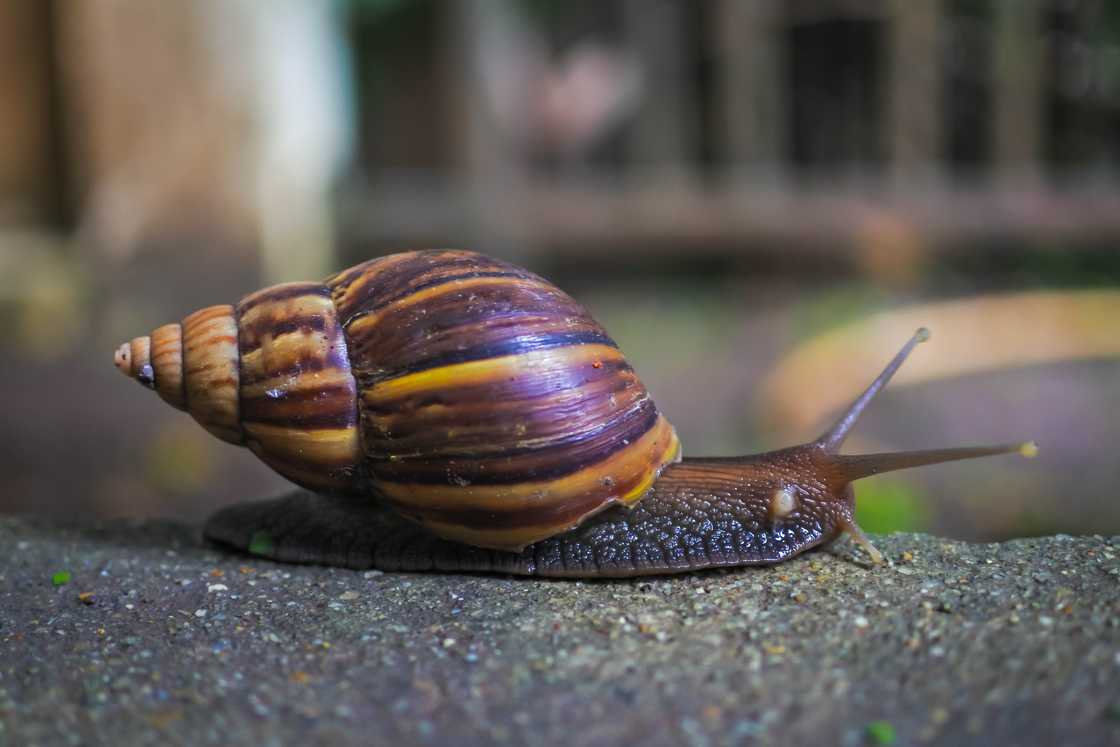
Source: Getty Images
- Mass: 1 kilogram (2.2 pounds)
- Trophic level: Carnivorous
- Lifespan: 2–3 years
- Class: Gastropoda
Most snails retreat inside their shells to avoid danger. In contrast, the Japanese land snail, one the most stupid animals in the world, exits its shell to defend itself by throwing it at its predator.
Killdeer
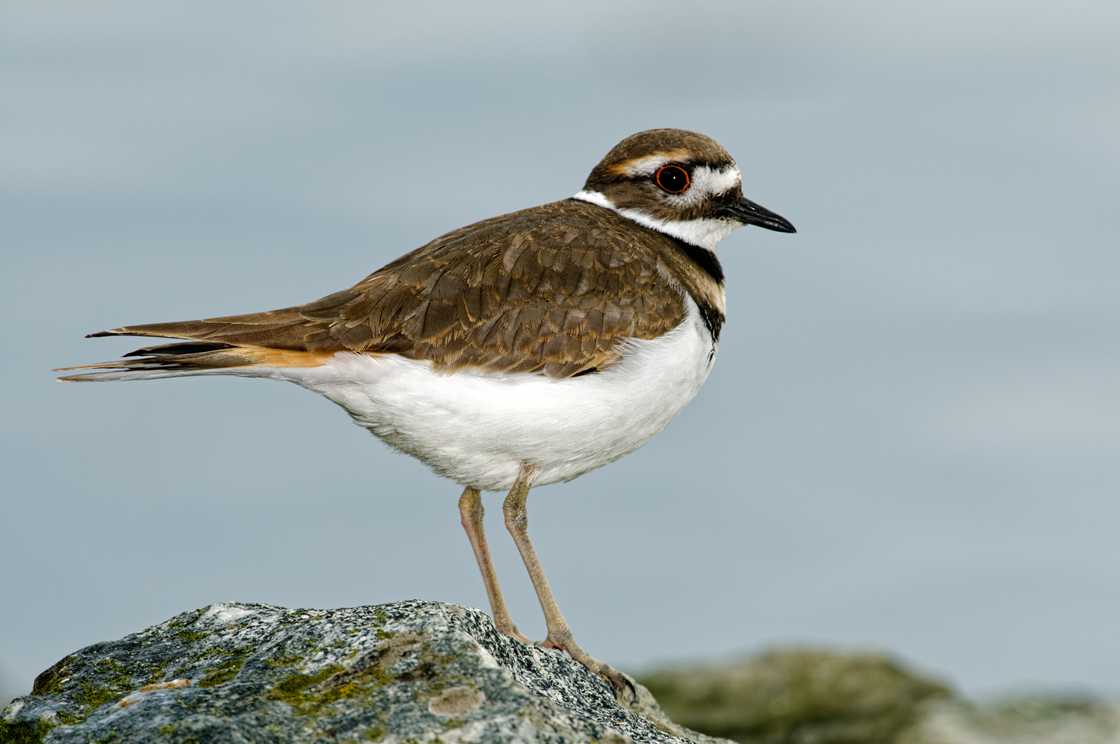
Source: Getty Images
- Mass: 88 grams (0.19 pounds)
- Trophic level: Omnivorous
- Lifespan: 10 years, 11 months
- Class: Aves
Killdeer races around, yelling its call and drawing the interest of its adversaries. When confronted by a rival, instead of fleeing, it stands stationary and bounces down and up as if experiencing hiccups. The killdeer also makes its nest on ground level, making it an easy target.
Secretary bird

Source: Getty Images
- Mass: 2300–4270 grams (5–9.4 pounds)
- Trophic level: Carnivorous
- Lifespan: 10–15 years (in the wild), 19–20 years (in captivity)
- Class: Aves
Even though the secretary bird can fly, it refuses to utilise its wings. Instead, it loves to stroll to capture its prey, primarily snakes. As a result, they are frequently assaulted by venomous snakes, as the bird execute their prey by trampling on it.
Furthermore, their feet cannot grab their food securely. That implies that everything they kill must be swallowed right away, transported in their bill for some time, or just abandoned behind.
Norwegian lemming
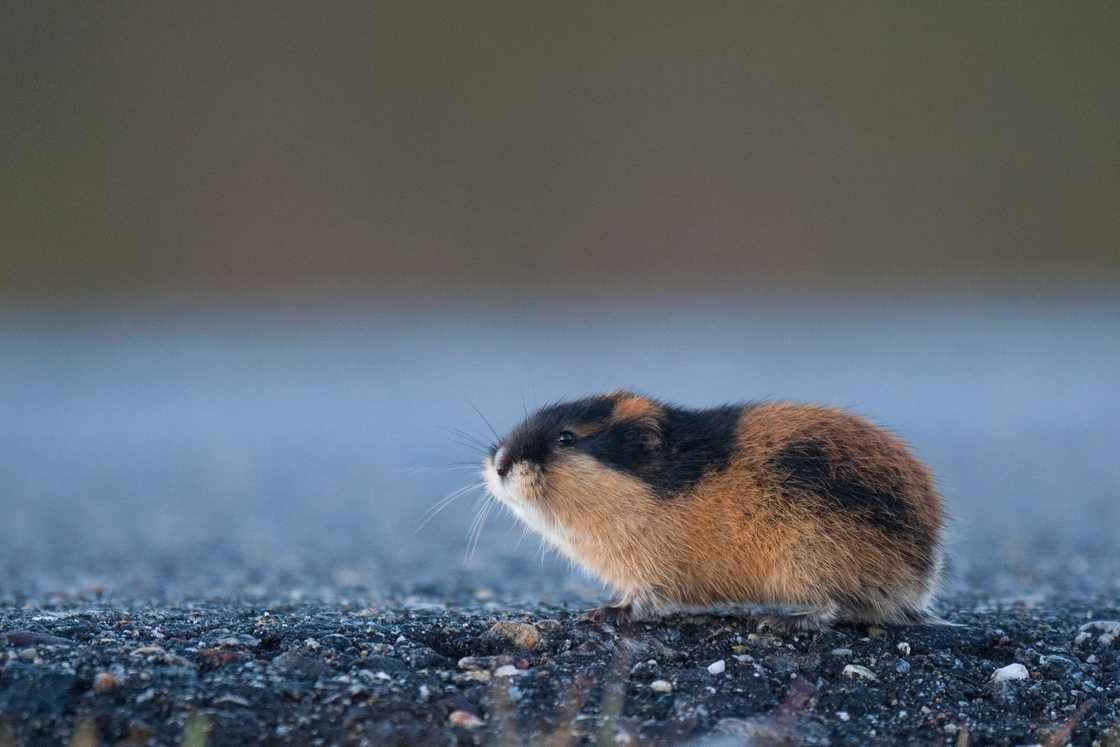
Source: Getty Images
- Mass: 70 grams (0.15 pounds)
- Trophic level: Herbivorous
- Lifespan: 1–2 years (in the wild) 3.3 years (in captivity)
- Class: Mammalia
The Norwegian lemming will battle animals that are bigger than itself, such as bullmastiffs, cats, and birds of prey, when necessary. Its principal defence mechanism, the formidable teeth, requires it to come sufficiently close to its predator to take a bite.
Komodo Dragon

Source: Getty Images
- Mass: Male 79–91 kilograms (174–200 pounds) Female 68–73 kilograms (149–160 pounds)
- Trophic level: Carnivorous
- Lifespan: 30 years (in the wild)
- Class: Reptilia
The mouth of the Komodo dragon is the dirtiest of any animal. A single bite from the animal may transmit sufficient E. coli and other pathogens to kill far more powerful animals in just a single day or two. It tracks the bitten victim about, waiting for it to die.
Furthermore, it can consume nearly 80% of its body weight in one meal. It isn't sure when to cease eating, so it gains weight and slows it down significantly.
Northern fulmar chick
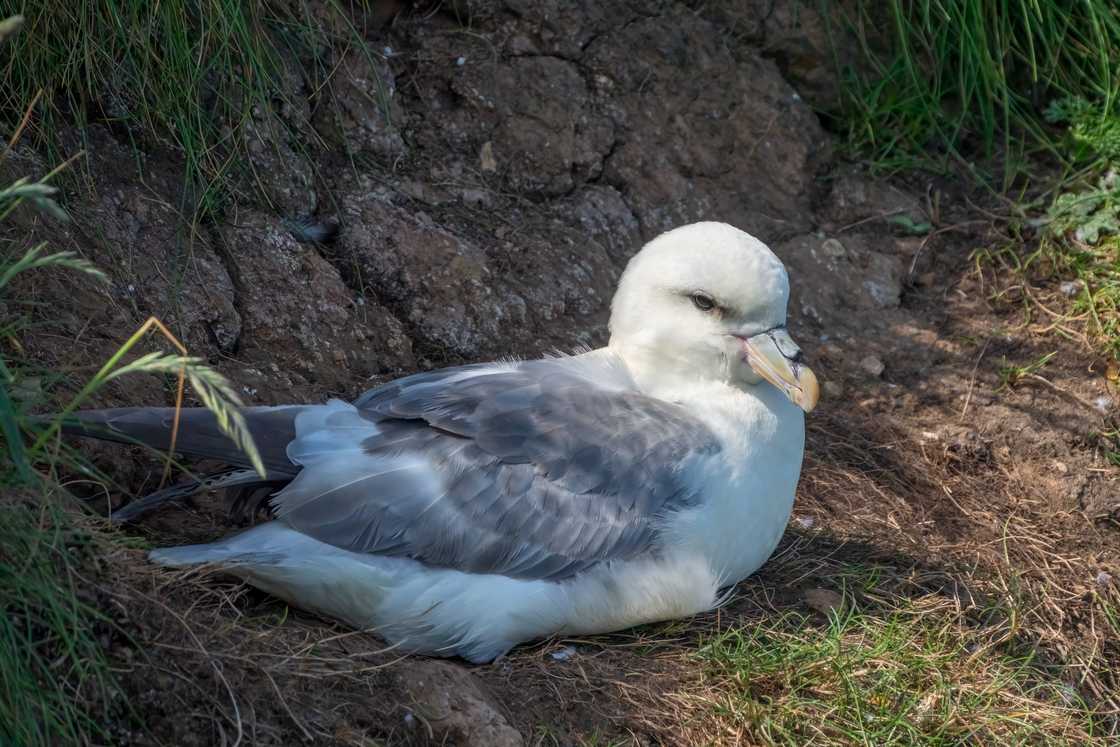
Source: Getty Images
- Mass: 450–1000 grams (0.99–2.2 pounds)
- Trophic level: Carnivorous
- Lifespan: 30 years
- Class: Aves
The northern fulmar chick appears rather foolish as it rests in its nest on rocky ledges with no capacity to fly. When an attacker draws near, it vomits a poisonous oil that immobilises its adversary.
Are pigs the dumbest animals?
No. Pigs are considered one of the most intelligent animals in the world. They have the intellect capacity of a toddler and are regarded as the globe's most intelligent animal! Pigs are considerably more clever and capable of training than any dog breed.
Is Panda the dumbest animal?
Pandas are considered the world's stupidest animals. They have a terrible record of rearing and nurturing their young ones, with females killing their offspring.
What is the dumbest animal? Above are some of the least intelligent animals in the world. The animal kingdom includes both dumb and sophisticated animals. It's not that the world's stupidest creatures lack brains or cleverness. Their absence of universal logic in their behaviour and actions makes them appear foolish.
Yen.com.gh recently released a fantastic list of the cutest animals in the world. There are millions of adorable and cuddly creatures in the world. These animals are intriguing, having distinctive characteristics and behaviours.
There's no disputing that animals can be cute, from puffy red pandas to lively pikas. These creatures capture everyone's hearts, whether it's their adorable little faces, gorgeous fur, or cute behaviours. Read the post to learn about some of the world's most charming creatures.
Source: YEN.com.gh



